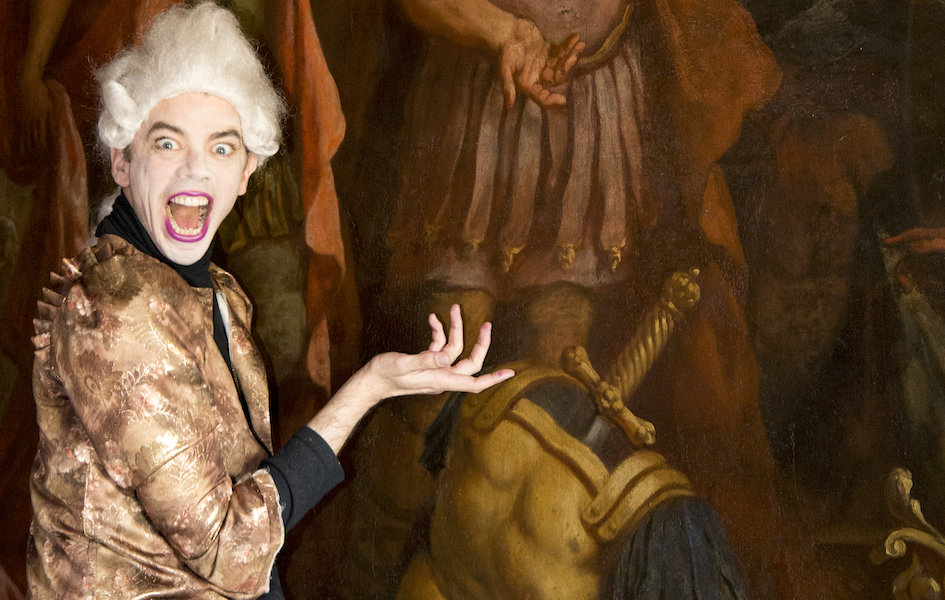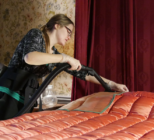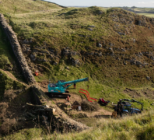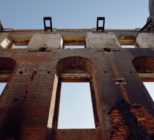Museums and heritage attractions by their nature are exceptional places to mark anniversaries of major events in history – drawing on their many-layered collections they can produce memorable exhibitions that change our perception of a certain topic. This has been exemplified recently through the ongoing commemorations of the 100th anniversary of WWI with exhibitions such as Wounded: Conflict, Casualties and Care at the Science Museum and the Tower of London’s, Blood Swept Lands and Seas of Red, which is currently on tour.
So in many ways you would expect museums to be putting into context what the pivotal Sexual Offences Act 1967 meant by delving into Britain’s LGBTQ history and its present. And they are: The British Museum’s Desire, Love, Identity: exploring LGBTQ histories, examines objects from around the world, covering ancient civilisations right up to 2017. Tate Britain’s Queer British Art 1861 to 1967 explores how artists expressed themselves in a time when established assumptions about gender and sexuality were being questioned and transformed. It has also explained the Q part of LGBTQ acronym by saying: “Queer has a mixed history – from the 19th century onwards it has been used both as a term of abuse and as a term by LGBT people to refer to themselves. Our inspiration for using it came from Derek Jarman who said that it used to frighten him but now ‘for me to use the word queer is a liberation’. More recently, of course, it has become reclaimed as a fluid term for people of different sexualities and gender identities.” Throughout these exhibitions is a contextualisation and celebration of LGBTQ life past and present.
Now is the time we can begin to tell these stories more openly. Now we are here it feels like absolutely the right decision. There was a little bit of trepidation but we have received positive coverage – we are not known for talking about these topics before
At Liverpool’s Walker Art Gallery Coming Out: Sexuality, Gender and Identity, which is an Arts Council Collection National Partners Exhibition, picks up the story from the time of the Sexual Offences Act 1967 by bringing together a diverse range of artists exploring sexuality and gender identity. This exhibition, which launches in July, also reveals the findings of two years of research by the Gallery into LGBT history that has unearthed ‘hidden queer histories and institutional blind spots’. In Brighton, known as the UK’s gay capital, Brighton Museum will be launching its exhibition The Museum of Transology next month as part of its Be Bold series, which challenges the idea that gender is fixed by showcasing a collection of artefacts and photographic portraiture, which began with donations from Brighton’s vibrant trans community. “It is now the largest collection representing trans people in the UK – if not the world,” it says. The museum also launched an LGBTQ Museum Trail in 2013, which identifies objects in its collection with LGBTQ connections.

But possibly the most surprising places to see LGBTQ history on display is at National Trust properties, where 25 locations are revealing their same sex relationship stories this year, many for the first time. The Prejudice and Pride programme is part of a recent effort by the Trust to pick out topical, national events and provide context and experiences through the relevant histories at its 350 heritage properties. The trust received a special recognition award at this year’s Museums + Heritage Awards for its significant contribution to the sector and pushing the boundaries of visitor engagement. The trust believes the current programme fits in perfectly with its slogan: ‘Forever, For Everyone’. Its programme of events, which opened in March with a recreation of The Caravan, a queer friendly London club in the 1930s, in partnership with the National Archives, will also see the publication of a special LGBTQ guidebook next month.
“The Trust is accused of being the dead hand of conservation but we have worked really hard over the past two or three years to change the culture of the organisation so that year-on-year we think about refreshing what we do at our properties,” says Tom Freshwater, the National Trust’s head of national programming. “We learnt some lessons from 2014 when everybody was thinking about the First World War – that we should pick some interesting topics that actually join up our places and are relevant to what people are thinking about in their everyday lives.”
Opportunity
Freshwater says the anniversary of the Sexual Offences Act 1967 is an opportunity for the National Trust to play its part for the nation and offers a moment to look across the properties in its care that have strong LBGTQ stories and draw them together under the theme Challenging Histories. As part of a new strategy the Trust will focus on specific major national anniversaries and highlight the influence of its properties and their people on these life-changing events. Next year the Trust will be covering Women and Suffrage and the 100-year anniversary of the Representation of the People Act 1918 that saw votes for women over 30. Then in 2019 the Trust will focus on Radical Landscapes that will include the 200th anniversary of the Peterloo Massacre.
“The aim of what we are doing this year and in the future, is to introduce cultural heritage to new audiences and deepen the understanding of existing audiences.”
Some of the most popular names featured in the Prejudice and Pride programme include Virginia Woolf and Vita Sackville-West. Woolf’s novel Orlando was inspired by the family history of her lover – Vita Sackville-West, whose family owned Knole House. The stories also go back into the institutional history of the Trust with James Lees-Milne, a National Trust employee who was openly gay, who persuaded many friends to put their properties in the Trust’s care.

There are also lesser known stories such as that of Henry Paget, the 5th marquis of Anglesey, who led a very flamboyant lifestyle. He used to dress in velvet and tweed, fitted perfume dispensers to the exhaust of his car and changed the chapel at Plas Newydd into the gaiety theatre so he could stage shows. And the story of William Banks from Kingston Lacey in Somerset who had to flee abroad in 1841 because he was caught with a guardsman in London which led to the threat of prosecution after which he quickly made over his land to his heir. He fled and collected art from across Europe and then sent it back to the house.
“The fundamental thing is that if you don’t know the stories about that place you are missing a huge aspect of the property. It changes your understanding of it and we have been careful to work with people who can communicate this,” says Freshwater. “Historic England have also expressed interest in talking to the National Trust to amend listings information so we can actually flag up aspects of LGBTQ heritage across organisations going forward.”

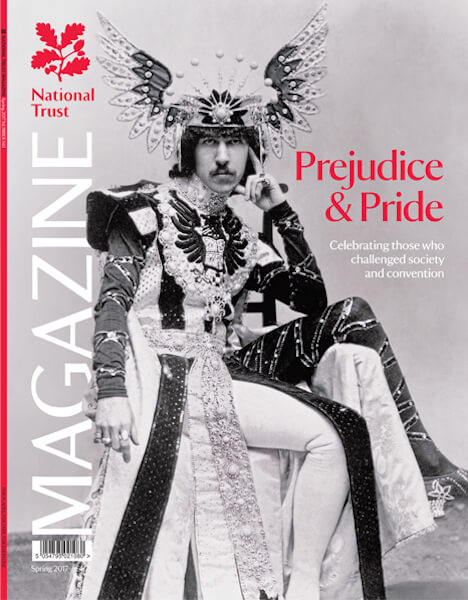
Historic England is celebrating the anniversary with its Pride of Place programme, which recognises that LGBTQ heritage needs to be identified, recorded, understood, cared-for, and celebrated, as part of the national identity and has an array of useful information in its website.
“Pride of Place is part of a big drive by Historic England to improve understanding and recognition of England’s diverse heritage,” said Celia Richardson, Director of Communications at Historic England. “Too often, the influence of people who have helped to build our nation has been ignored, underestimated or is simply unknown, because they belonged to minority groups, including LGBTQ, Black and Minority Ethnic groups, the disabled and women. Pride of Place uncovers and celebrates places of LGBTQ heritage across England, ranging from the frontiers of Roman Britain to the gay pubs and clubs that are still important in our lives today.
Since Historic England launched the project, many stories and other hidden histories have been uncovered, with members of the public sharing information about buildings and places special to the LGBTQ community with more than 1,600 contributions being made so far. To mark the 50th anniversary of the partial decriminalisation of homosexuality in Summer 2017, Historic England will be announcing new listings of LGBTQ-related buildings, gardens, monuments and other historic places.
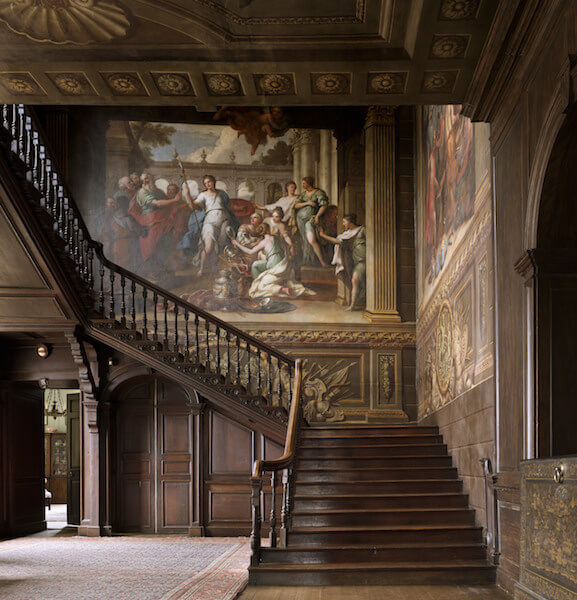
Freshwater says that these developments are not ‘a flash in the pan’ but are about making sure the research and development that the properties have produced adds to the Trust’s collections and is also imbedded in its staff training, including a refresh of its volunteer induction.
“Now is the time we can begin to tell these stories more openly. Now we are here it feels like absolutely the right decision. There was a little bit of trepidation but we have received positive coverage – we are not known for talking about these topics before, so we deliberately partnered with people who could get the stories over.”
The National Trust has worked with the Research Centre for Museums and Galleries at the University of Leicester’s Museum Studies department to go into properties and use its expertise of working with diverse histories in heritage settings to help the Trust’s property teams talk about these stories with confidence.
“It’s about how you have that conversation with the visitor, what terminology you use and giving confidence for people to have conversations about this. Our interpretation is conveyed through working with our volunteers to help in the first person with visitors and with access to further details to talk about these stories.”
The National Trust is also working with Heritage Open Days, which takes place in September across England and which it hosts, to commissions artwork as part of its work to help the public respond to the heritage places in their area.
“We are collecting all our LGBTQ stories and saying that in this year in which the nation is thinking about the positive aspects of the decriminalisation there is a broader, longer trajectory. This is not just about urban centres but across regions and countries, because we also look after Wales and Northern Ireland, and this approach gives us a broad sweep of history.”
The Trust is also taking part in a conference with the University of Leicester next April, where it will review the Prejudice and Pride programme, what they did and what they learnt from it. “So there will be an interesting stock taking exercise in 2018 to look back at what we have done and how we progress with it.”
National Trust - Prejudice and Pride highlights
Clay & Diamonds, BFI and the National Trust present Orlando: The Queer Element on Friday, June 30.
As well as interpretation on James Thornhill’s murals that depict the relationship between Sarah Churchill, Duchess of Marlborough and Queen Anne, Hanbury has worked with a series of artists including Tom Marshman whose work will be on display until Sunday 26 November and will also be performing on Friday 7 July.
Wightwick Manor, West Midlands
Taking Pride – an exhibition of work by Simeon Solomon who was a pre-Raphaelite and openly gay. The exhibition tells the story of his persecution and perseverance and how the prejudice he faced affected his career.
Playwrights, Pioneers and Provocateurs – a new exhibition that explores the work and relationships of Edy Craig and her circle of friends in the LGBTQ community.

